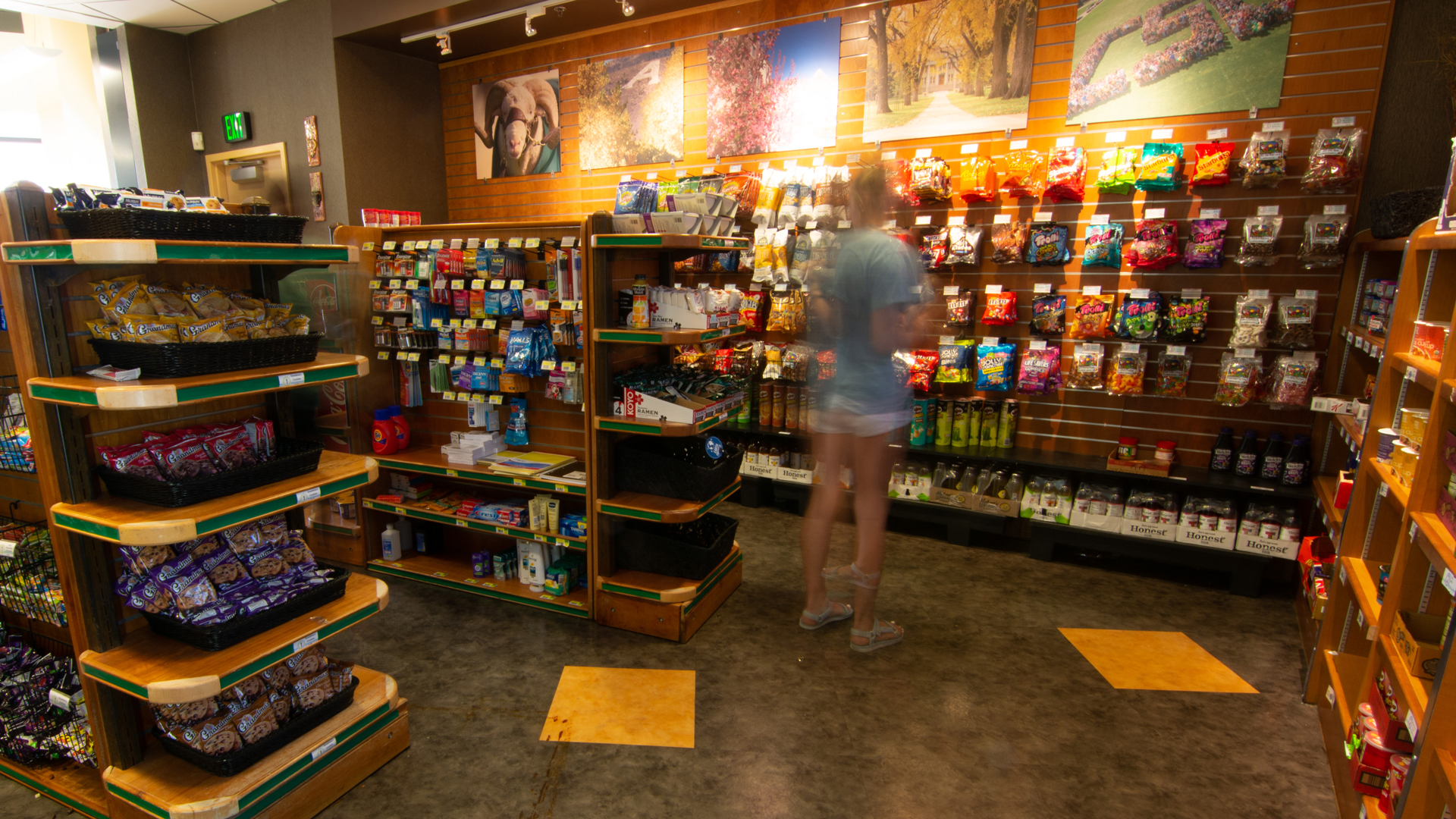By Zachary Foster
Introduction
Students at Colorado State today are trying to be more conscious about their diets in relation to their health and the environment, as well as being more sustainable. With this becoming more popular students have been moving more towards vegetarianism and veganism. I do not believe that students should completely cut meat out of m their diets. I am a firm believer in having lots of protein in our diets and that people should be eating meat, including beef. This leads me to today’s point; that meat is an almost essential part of a healthy and balanced diet due to its many benefits along with its effect on our health.
Proper Diet
When we are talking about meat and fat there is a lot of controversy about the topic and many people think that it is not worth the negatives. There is a famous documentary called Food Inc. that goes in-depth about the beef industry and critics trash it a lot for the negatives that it has. Critics don’t examine the other side of the story that shows the benefits of beef and how some of the alternatives to the products we get from cows are in some cases less sustainable than supporting the cows and more damaging to the environment. A good example of this is when people argue that almond milk is better than cow’s milk. The truth is that in order to grow a single almond it requires about 1 gallon of water. To then turn almonds into “milk” which is just more water and the crushed oils and essence of almonds requires anywhere from 30 almonds to 255 almonds to make a singular gallon of almond milk. This varies due to each company’s recipe, but on the low end we are looking at a whopping minimum of 30 gallons of water at a minimum to make half a gallon of almond milk, and on the high end it requires 255 gallons of water to produce a half-gallon. This is incredible and almost unbelievably wasteful and inefficient. It would be better for the environment if people just drank cow’s milk and then used that water that would’ve been wasted on areas that do not have access to water or clean drinking water. This is not the only issue that happens with the lack of cow byproducts in diets.
Weight loss
Beef is not the only meat that needs to be reintroduced to people’s diets, it is other meats and more fats since many people give fat a bad rap and they think it is the reason they are either gaining or not losing weight. The real reason is that they are not having a proper calorie deficit and it is more about how much you eat but not so much about what you are eating. Along with this many diets having a lack of fat cause students’ to be unable to absorb fat-soluble vitamins properly, and instead of being digested, they are released from the body as a waste byproduct. Many of these vitamins include forms of A, D, and E, which are all essential to a healthy diet. These vitamins are found mostly in animal fats, which is the main reason why I believe that animal fats should be a healthy part of people’s diets when they are in the right amounts. This can be achieved by eating more meat. Specifically, students need to be eating fewer lean cuts and more regular cuts that still contain fat from the animal. If people knew how important fats were to them being healthy then it would help to break the stigma about fat and the false information that is spread about it on campus and among college students at CSU.

Activity
If you don’t believe me yet then let me win you over with the other health benefits of having meat present in your diet. Firstly, it tastes fantastic when it is prepared properly and there are so many recipes that involve it there is bound to be one where you will enjoy it. But in all seriousness, there are non-essential amino acids that are present in meat and are super healthy and good for your body. Some of these can even help break down fats as some studies show. They are also very effective at increasing muscle output and recovery. This can be very helpful for active students at CSU since a large majority of them participate in extracurricular activities that are physically demanding and strenuous. Another benefit specifically from eating beef is an antioxidant called “Glutathione” which has anti-aging benefits, increases longevity, prevents illness, decreases the risk of chronic illness, and strengthens your immune system overall. All meats contain which are essential to protein synthesis in the human body, which is important for students who are working out on campus and are in sports. It is also important just so that students can maintain their muscle mass and maintain a healthy weight. Amino acids, which are essential to protein synthesis in the human body, are important for students who are working out on campus and are in sports. It is also important just so that students can maintain their muscle mass and maintain a healthy weight.

Meat Alternatives
Many students here at CSU would argue that protein alternatives are better for your diet and are more natural since most of them come from plants. These are more processed foods than meat and tend to be lacking in many areas where it falls short compared to meat. Many producers do add some amino acids back, but they are missing one or more depending on the brand. This makes it difficult for the protein to be used effectively by the body. Students try to combat this by taking supplements, but this is more unnatural than just eating meat. Eating meat is more natural since the vitamins and amino acids are there from the beginning. Another argument is about sustainability but it is a very complex matter with many different angles and variables that can change the stance or outcome. In the right instances with proper amounts of meat in a diet with meat uses less resources than a fully vegetarian diet or vegan diet.
Desert
With all these health benefits, how could somebody say no to having meat and the fats that come along with it in their diets? Along with this, the detriments of some of the substitutes for meat like soy-based proteins have negative effects on men’s health especially and they lack the amino acids and vitamins that are present in meat. Lastly, I think we can all agree that being healthy is the most important part of any diet and that it should come before we worry about anything else. Meat can lead to a more healthy and balanced diet for all individuals and can reduce the number of supplements needed to balance out the lack of amino acids and necessary vitamins for a healthy diet.
About the Author
Hi, I’m Zachary Foster, a student at CSU in the Honors program and I am pursuing a degree in computer engineering. The honors class I am currently enrolled in is titled, You Are What You Eat, which is what sparked my interest in the subject of food. I am also a very active person; I visit the gym almost every day so I have done a large amount of personal research into diets and what I should be eating to have a large amount of exercise present in my life.
Sources
26, Anuradha Varanasi |September, et al. “You Asked: Should We All Go Vegetarian or Vegan to Reduce Our Carbon Footprint?” State of the Planet, 6 Mar. 2020, https://news.climate.columbia.edu/2019/09/26/vegetarian-vegan-diets-climate-change/.
Albahrani, Ali A, and Ronda F Greaves. “Fat-Soluble Vitamins: Clinical Indications and Current Challenges for Chromatographic Measurement.” The Clinical Biochemist. Reviews, The Australian Association of Clinical Biochemists, Feb. 2016, https://www.ncbi.nlm.nih.gov/pmc/articles/PMC4810759/#:~:text=The%20fat%2Dsoluble%20vitamins%20(FSV,and%20haemorrhage%20(vitamin%20K).
Brown, Mary Jane. “Animal vs Plant Protein – What’s the Difference?” Healthline, Healthline Media, 17 June 2017, https://www.healthline.com/nutrition/animal-vs-plant-protein.
Diekman, Connie, and Kim Malcolm. “Consumer Perception and Insights on Fats and Fatty Acids: Knowledge on the Quality of Diet Fat.” Annals of Nutrition and Metabolism, Karger Publishers, 30 July 2009, https://www.karger.com/article/Abstract/220824.
Finer, Nicholas. “Low‐Calorie Diets and Sustained Weight Loss.” Wiley Online Library, John Wiley & Sons, Ltd, 17 Sept. 2012, https://onlinelibrary.wiley.com/doi/abs/10.1038/oby.2001.133.
Hinchman, Walter. “Essential vs Nonessential Amino Acids.” Swolverine, Swolverine, 19 Mar. 2021, https://swolverine.com/blogs/blog/essential-vs-nonessential-amino-acids.
Jay, Written by: et al. “How Many Calories Should I Eat a Day to Lose Weight or Gain Muscle?” A Workout Routine, 21 Nov. 2020, https://www.aworkoutroutine.com/how-many-calories-should-i-eat-a-day/.
“Journal List Menu.” Wiley Online Library, Feb. 1960, https://doi.org/10.1002/jsfa.2740110204.
Kenner, Robert, et al. Food, Inc..
Science, Amino. “Do Amino Acids Burn Fat?” The Amino Company, The Amino Company, 15 Dec. 2020, https://aminoco.com/blogs/amino-acids/do-amino-acids-burn-fat.
Scott, Evon, et al. “Why Environmentalists Eat Meat.” PLOS ONE, Public Library of Science, https://journals.plos.org/plosone/article?id=10.1371%2Fjournal.pone.0219607.
University, Evan Vehslage New York. “The Problem with Drinking Almond Milk You Probably Never Thought Of.” Spoon University, 11 Oct. 2017, https://spoonuniversity.com/lifestyle/the-problem-with-drinking-almond-milk-you-probably-never-thought-of.
























